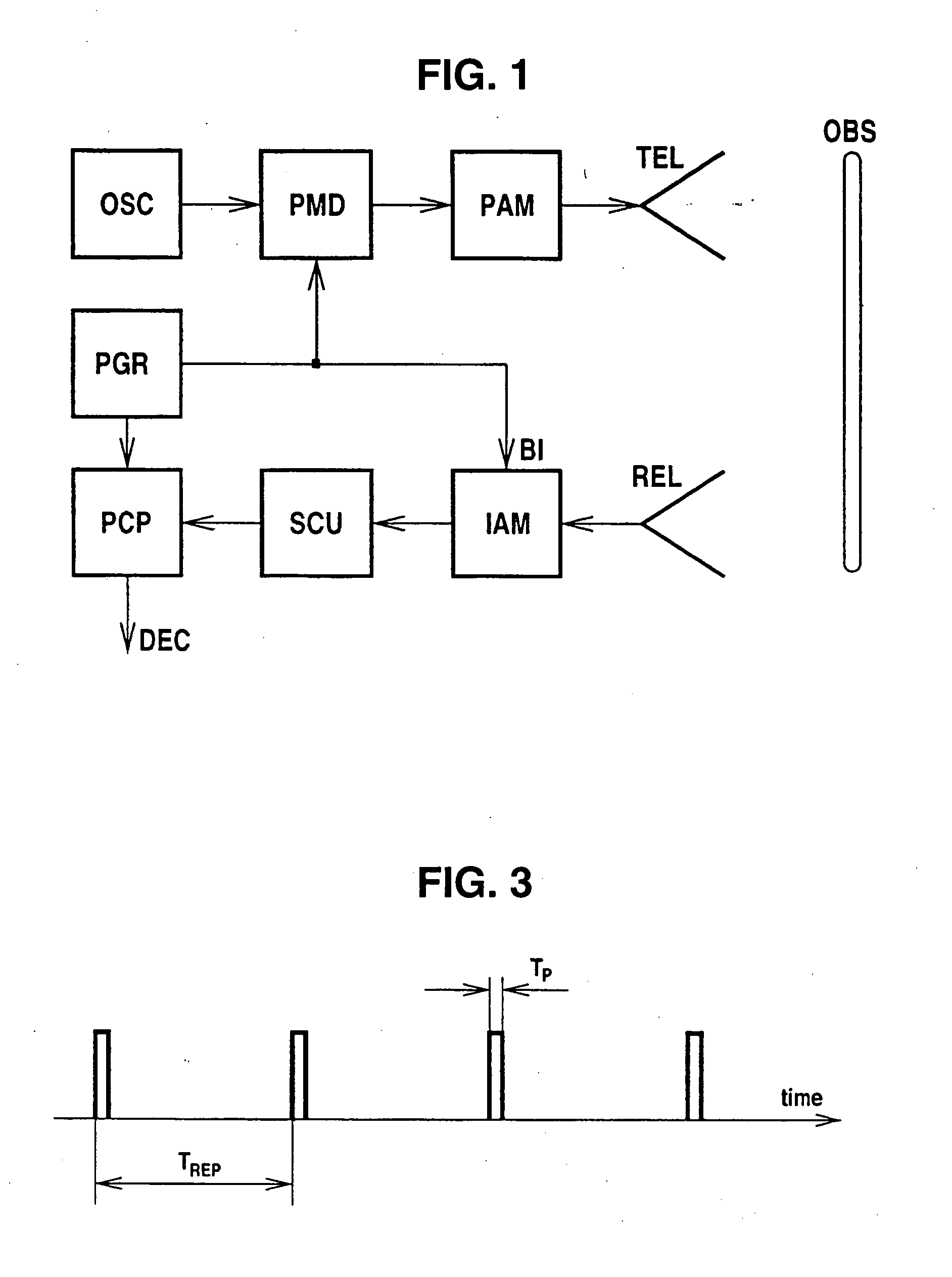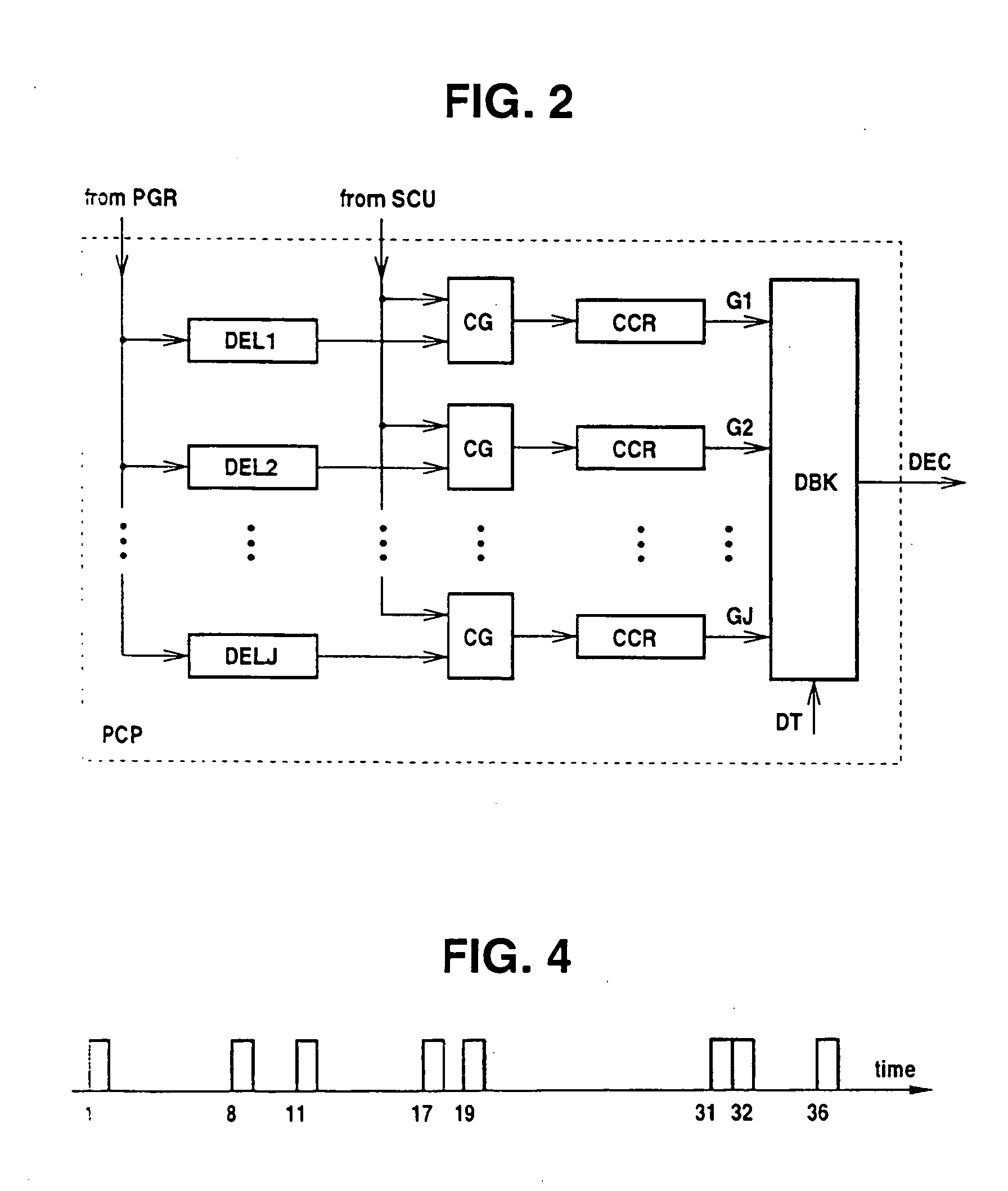Generation a sequence of pulse trains
a pulse train and sequence technology, applied in the direction of pulse train generators, pedestrian/occupant safety arrangements, instruments, etc., can solve the problems of significant decrement in detection performance, difficult to construct large sets of binary sequences with and inability to assign a distinct binary sequence to each. , to achieve the effect of good autocorrelation and cross-correlation properties
- Summary
- Abstract
- Description
- Claims
- Application Information
AI Technical Summary
Benefits of technology
Problems solved by technology
Method used
Image
Examples
Embodiment Construction
[0053]FIG. 9 is a block diagram of a system for generating composite pulse trains according to one preferred embodiment of the present invention. The system comprises a sequential state module SSM, a state decoder STD, a random packet selector RPS, a random gap generator RGG and a clock generator CKG.
[0054] During the system operation, the sequential state module SSM changes its state successively at the time instants determined by clock pulses CLK supplied by the clock generator CKG. The total number NS of distinct states of the sequential state module SSM should be at least equal to the span Lmax of the longest primary pulse packet used by the system; hence
NS=2K≧Lmax
where K is the number of flip-flops utilized by the sequential state module SSM. Redundant states of the sequential state module SSM may be employed for generating a regular gap, and the remaining states, if any, should be eliminated. If the number (NS−Lmax) of redundant states is too small to generate a complete r...
PUM
 Login to View More
Login to View More Abstract
Description
Claims
Application Information
 Login to View More
Login to View More - R&D
- Intellectual Property
- Life Sciences
- Materials
- Tech Scout
- Unparalleled Data Quality
- Higher Quality Content
- 60% Fewer Hallucinations
Browse by: Latest US Patents, China's latest patents, Technical Efficacy Thesaurus, Application Domain, Technology Topic, Popular Technical Reports.
© 2025 PatSnap. All rights reserved.Legal|Privacy policy|Modern Slavery Act Transparency Statement|Sitemap|About US| Contact US: help@patsnap.com



